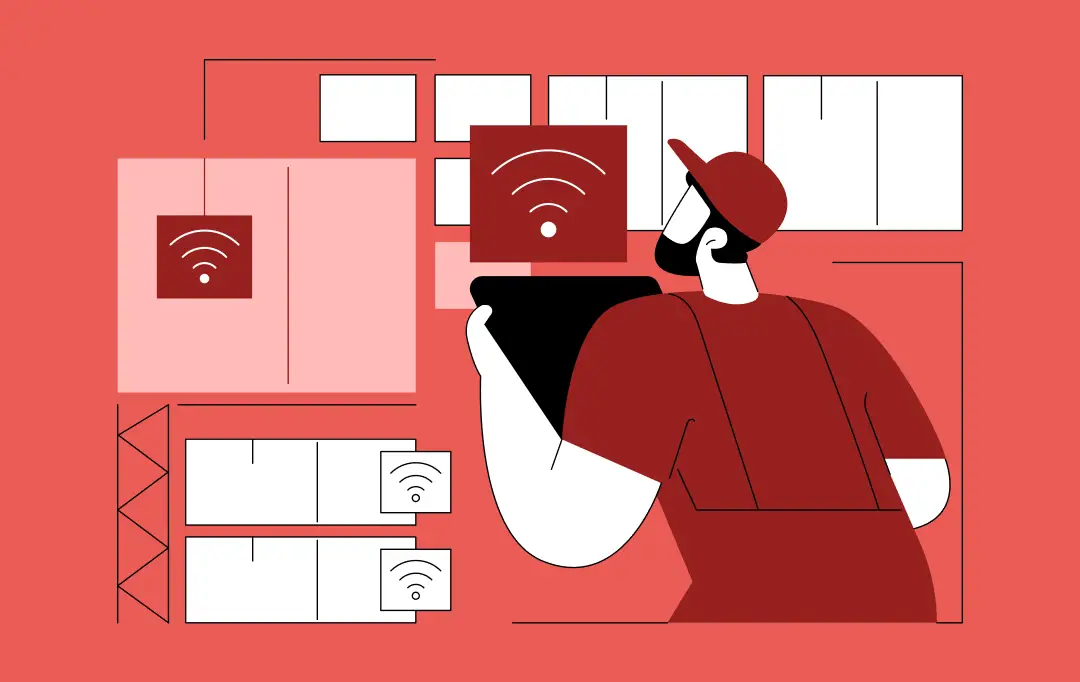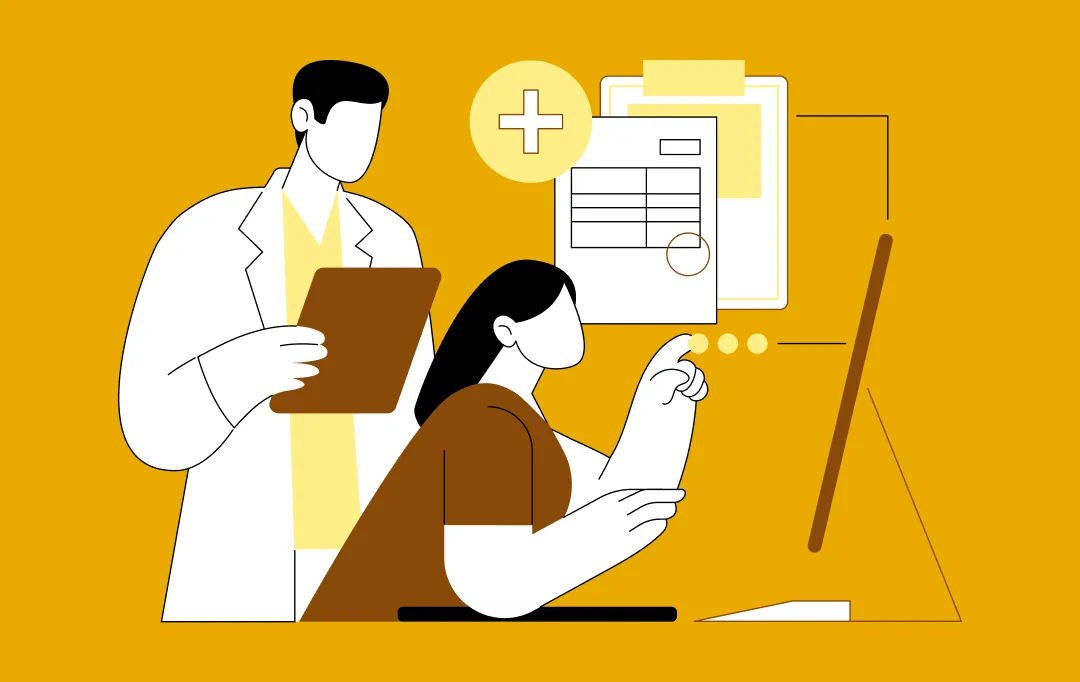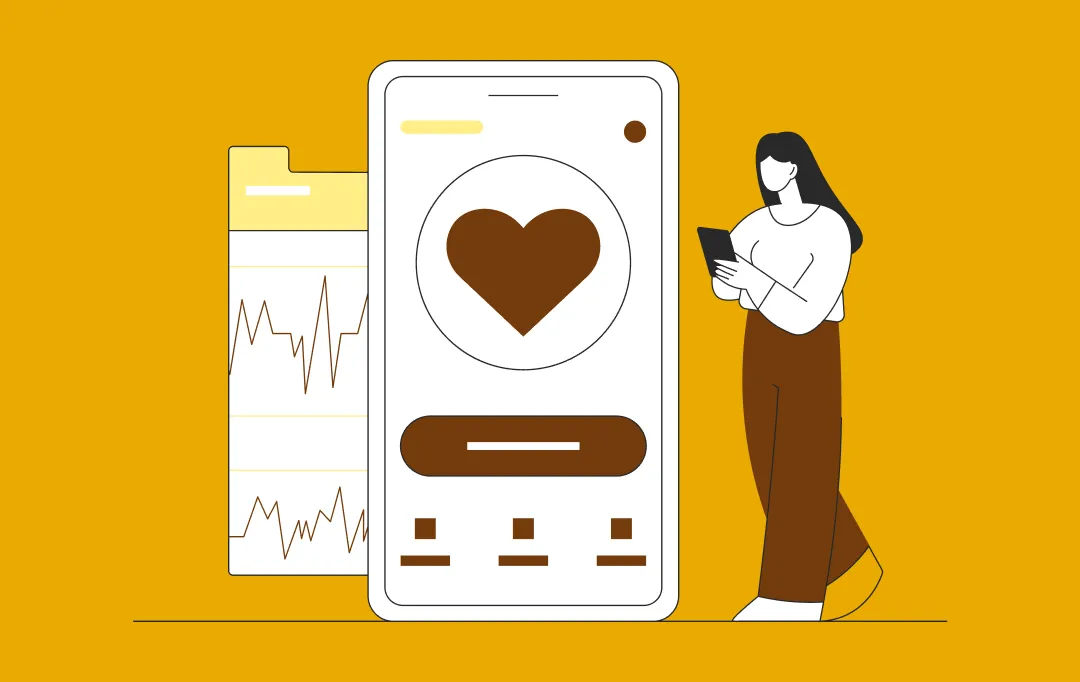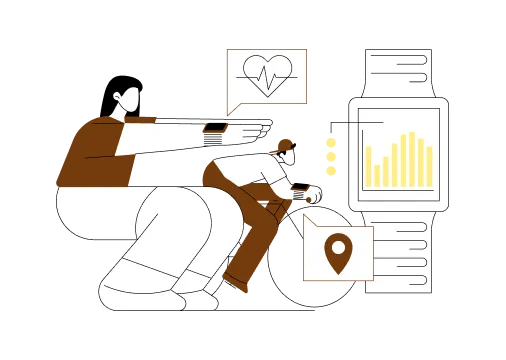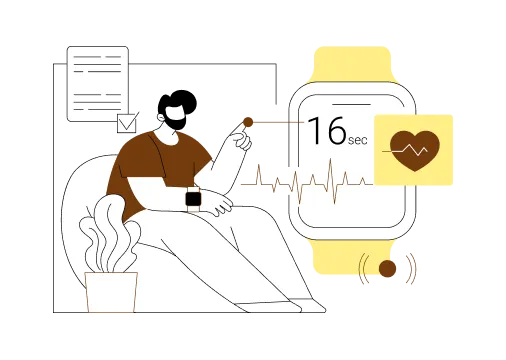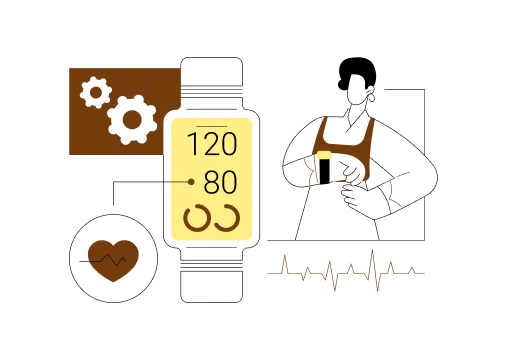- UK HealthTech Landscape in 2026
- 10 AI-Driven Transformations in UK Healthcare
- 1. AI-Enhanced Diagnostics and Imaging
- 2. Predictive Analytics NHS for Preventive Care
- 3. Virtual Health Assistants and Patient Support
- 4. AI in Drug Discovery and Clinical Trials
- 5. Operational Automation in Hospitals
- 6. AI-Powered Mental Health Solutions
- 7. Remote Monitoring and Digital Twins
- 8. Personalised Treatment Planning
- 9. AI-Powered Surgical Robots UK
- 10. Healthcare Cybersecurity and Data Governance with AI
- Policy and Regulation in UK Healthcare AI
- Challenges and Considerations for HealthTech Leaders
- 1. Integrating with complex NHS legacy IT systems and fragmented data
- 2. Overcoming clinician scepticism and training gaps
- 3. Ensuring data quality and avoiding harmful bias
- 4. Navigating multiple layers of compliance while moving fast
- 5. Proving return on investment in a cost-sensitive health system
- Future of Healthcare in the UK: Beyond 2026
- Generative AI for Clinical Documentation and Patient Support
- Predicting Health Trends at a Population Level
- Safer Decision Support with UK-Specific Large Language Models
- Better Data Sharing Across NHS Trusts
- More Public Funding and Support for Scale-Up
- How Appinventiv Supports HealthTech Innovation
- FAQ’s
Key takeaways:
- AI funding is driving real progress — NHS trusts are moving from pilots to practical tools that speed up diagnosis and patient care.
- With staff shortages and long wait times, AI is helping the NHS do more with less, easing daily strain on clinicians.
- The UK’s digital health market is booming, giving startups and hospitals new room to innovate safely and at scale.
- Regulation is evolving fast — bodies like the NHS AI Lab and NICE are setting clear standards to build trust in AI care tools.
- Patients are ready for change. The demand for faster, more personalised, tech-enabled healthcare is pushing innovation forward.
The UK’s healthcare system is at an inflection point. The government committed £21 million ($28 million) to the AI Diagnostic Fund (AIDF) to speed up adoption of artificial intelligence across NHS trusts. This funding is already helping healthcare systems across the UK to deploy advanced imaging and decision-support tools and there is more to come. (gov.uk)
The urgency is clear. The Royal College of Radiologists has warned of workforce shortages. The radiology department alone is operating with a 30% shortfall, and oncology with about 15%. UK healthcare is under real strain. Services are stretched, yet people still expect quicker, more personalised care. At the same time, the UK’s digital health market, worth about $12.8 billion in 2024, is on track to grow fast over the next few years.
This mix of pressure and opportunity is pushing both public and private players to step up and innovate responsibly. AI in the UK healthcare industry is at the heart of this shift. The NHS is already testing it across diagnostics, triage, and day-to-day operations, while healthtech startups and bigger tech firms work closely with regulators to keep new tools safe and compliant.
In this blog, we’ll take a closer look at the UK HealthTech 2026 landscape, share 10 practical ways AI is changing care delivery, break down key regulations, and explore what the next few years could mean for providers, patients, and innovators.
UK HealthTech Landscape in 2026
The adoption of AI across UK healthcare is shifting from limited trials to everyday services. NHS trusts are using it in diagnostics and triage, and fast-growing startups are building tools that plug into everyday care. With government backing and strong venture funding, the UK is becoming a leading test bed for health AI in Europe.
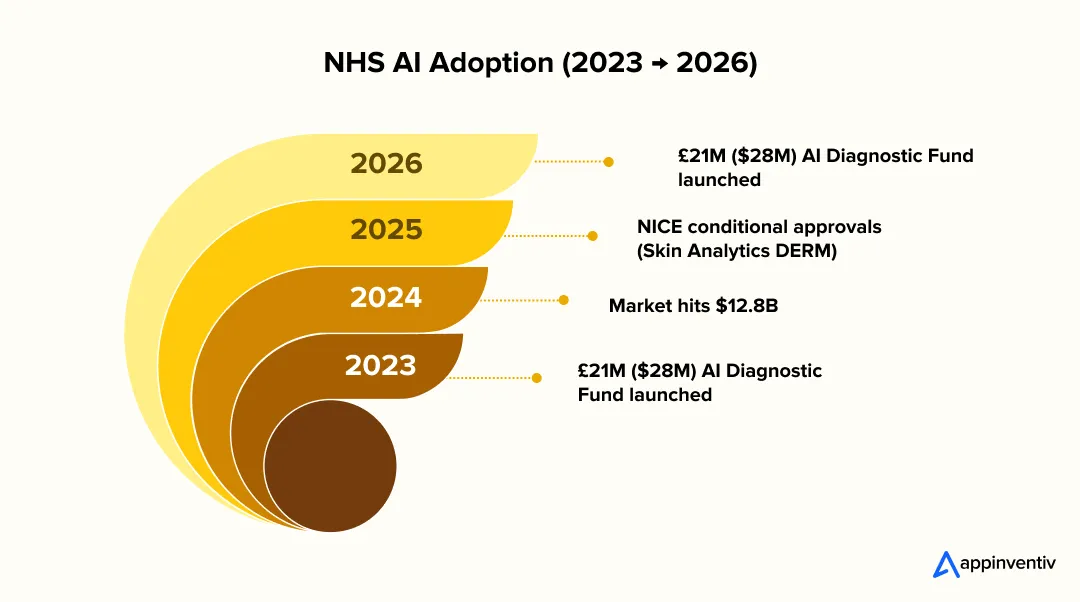
Market Size & Growth
Digital health is now one of the fastest-growing segments and AI in healthcare UK is at the centre of that growth as hospitals and primary care adopt smarter tools. Analysts project strong double-digit growth through the rest of the decade. Hospitals, community providers, and primary care are adopting AI and electronic health records (EHR) solutions to improve efficiency and patient outcomes. This expansion is shaping the UK HealthTech 2026 ecosystem, where adoption is expected to accelerate further. (imarcgroup.com)
Government Funding & NHS Initiatives
The AI Diagnostic Fund is one of several national efforts to move AI out of pilot studies and into routine use. This is opening the door for new HealthTech innovations in the UK to reach frontline care. Its grants help NHS imaging networks deploy tools that can triage scans, highlight urgent findings, and free radiologists to focus on complex cases. This work is part of the wider healthcare technology trends in the UK for 2026, driving early AI adoption. (gov.uk)
Digital Priorities & Policy Direction
Bodies such as the NHS AI Lab provide frameworks, pilot programs, and technical guidance to make AI in NHS deployment safer and more transparent, helping shape AI trends defining UK healthcare in 2026. This work includes standards for data quality, fairness, and explainability — essential as adoption accelerates.
Private Sector & Investment
London remains the UK’s primary HealthTech hub, but innovation clusters in Cambridge, Oxford, and Manchester are strengthening. Artificial intelligence UK healthcare startups in diagnostics, virtual care, and digital therapeutics are attracting significant venture funding and partnerships with NHS AI strategy 2026 to build a connected national AI ecosystem.
Changing Patient Expectations
UK patients are increasingly comfortable with remote consultations, symptom checkers, and mobile access to records. This willingness to engage digitally creates fertile ground for AI transforming UK healthcare, making digital-first care models possible at scale. It also shows why navigating the HealthTech landscape is now a strategic priority for providers and innovators.
Now is the time to build compliant, scalable AI solutions that fit NHS needs.
10 AI-Driven Transformations in UK Healthcare
In the UK HealthTech 2026 landscape, AI is no longer sitting quietly in research labs or behind pilot projects. It’s showing up in hospitals, GP networks, and even patient smartphones. Here’s how ten of the most important breakthroughs are shaping UK healthcare AI trends 2026.
| Challenge | AI Solution | Example |
|---|---|---|
| Radiology backlogs | AI imaging & triage | Annalise.ai in 64 NHS trusts |
| Long wait for lung cancer detection | Predictive X-ray analysis | NHS Scotland pilot |
| Routine follow-ups | Virtual assistants | Dora at Frimley |
| Bed blocking & paperwork | Automated discharge summaries | NHS pilots |
| Mental health backlog | AI triage | Limbic Access |
1. AI-Enhanced Diagnostics and Imaging
Radiology backlogs have long delayed treatment. AI in UK Healthcare is helping in diagnostics by scanning images first, flagging high-risk cases, and easing pressure on clinicians.
Example — Annalise.ai: Through the government’s AI Diagnostic Fund, Annalise.ai’s chest X-ray platform is being introduced in 64 NHS trusts. Its algorithm checks for more than 120 conditions, including cancers, pneumonia, and collapsed lungs, and highlights suspicious areas for radiologists to review. This speeds up triage, reduces missed findings, and gets urgent cases on to the right care pathway sooner, showcasing the use case of AI in clinical decision-making in the real world.
2. Predictive Analytics NHS for Preventive Care
Treating illness after it escalates is expensive and often harder on patients. AI in NHS settings is starting to help GPs see risk before symptoms appear by analysing health records, prescriptions, and test results.
Example — Imperial’s AIRE-DM: Researchers at Imperial College London built an AI model that can predict who might develop type 2 diabetes up to a decade in advance by studying ECG and patient history data. It’s been tested on UK hospital records with strong early results. This kind of foresight is shaping healthcare technology trends UK 2026 and showcases how AI innovations in the UK could move care from crisis response to prevention, saving lives and reducing system strain.
3. Virtual Health Assistants and Patient Support
Call centres and follow-up teams spend huge amounts of time on routine patient contact. Virtual assistants are one of the most practical ways AI in healthcare UK is easing routine patient contact, safely automating check-ins and appointment management.
Example — Dora at Frimley Health NHS Foundation Trust: Dora calls cataract patients after surgery, asks recovery questions, and flags any worrying answers to nurses. At Frimley, it has saved more than 500 nursing hours while keeping satisfaction scores high. Patients appreciate quick check-ins and fewer delays, and staff can focus on people who need hands-on care. This shows how telemedicine and AI integration can make follow-up more efficient and patient-friendly.
4. AI in Drug Discovery and Clinical Trials
Developing new treatments is slow and expensive. AI is helping UK pharma target the right molecules faster and reduce failed studies.
Example — BenevolentAI: London’s BenevolentAI takes a different path to drug discovery. Instead of starting with years of lab work, its scientists feed disease biology into machine learning models that look for patterns most people would miss. That work has already led to drug candidates now being tested in clinical trials. It’s a sign that good data and smart algorithms can trim years off discovery and offer hope for illnesses that have resisted treatment. Curious how this shift is playing out? Here’s a closer look at how AI is beginning to change drug discovery.
5. Operational Automation in Hospitals
A lot of what happens in hospitals never reaches patients’ eyes. Things like endless paperwork, figuring out who gets which bed, and managing daily schedules. AI is quietly stepping into these behind-the-scenes jobs and helping push digital transformation in healthcare UK by making operations leaner and more efficient.
Example — AI-drafted discharge summaries in London: Some NHS hospitals are now piloting AI to create first drafts of discharge notes. Doctors and nurses only need to review and finalise them. It’s a simple shift but one that saves hours for each patient, gets people home sooner, and frees up beds for the next admission. For hospitals, it’s a practical way to tackle the long-standing “bed blocking” problem.
6. AI-Powered Mental Health Solutions
The mental health backlog is severe, with long waits even for initial triage. AI is making early access easier and faster, and driving HealthTech innovations UK aimed at bridging care gaps quickly.
Example — Limbic Access: Integrated into NHS Talking Therapies, Limbic’s AI screens referrals by asking clinically validated questions and routing people to the right care level. It reduces administrative delays, lets clinicians spend time where it’s most needed, and helps patients start support sooner rather than waiting weeks just for an initial assessment.
7. Remote Monitoring and Digital Twins
Chronic conditions don’t pause when patients leave the hospital, and keeping them safe at home takes constant attention. That’s where AI and connected devices are stepping in — quietly tracking vitals, spotting early warning signs, and alerting doctors before things turn serious. It’s changing how long-term care works by shifting focus from reacting to preventing.
Example — Doccla Virtual Wards: Doccla teams up with NHS trusts to keep watch over heart and lung patients at home. Simple wearables track things like heart rate and breathing. When the numbers look worrying, AI nudges clinical teams before a small issue turns into an emergency. With the help of AI-driven healthcare solutions in the UK, patients make fewer rushed hospital trips, safer recovery at home, and specialists still close enough to step in when needed.
8. Personalised Treatment Planning
Everyone’s body responds differently to treatment, and AI is helping medicine finally catch up to that reality. By combining genetic data, medical records, and lifestyle patterns, AI can guide doctors toward treatment plans that fit each patient, not just the average case. This kind of precision care helps hospitals focus resources where they’re needed most.
Example — Skin Analytics: Used in NHS dermatology services, this AI scans skin lesions to determine risk. Low-risk patients can be safely reassured without hospital visits, while those with suspicious lesions are fast-tracked to dermatologists. It’s cutting waiting times and helping spot cancer earlier without overburdening specialists. This model is inspiring next-generation AI-driven healthcare solutions UK for other specialties.
9. AI-Powered Surgical Robots UK
Robotic surgery has been around for years, but AI is giving it new life. By analysing motion, pressure, and real-time imaging, AI helps surgeons move with greater precision and confidence. It’s not replacing doctors — it’s helping them operate with steadier hands, shorter procedures, and better outcomes for patients.
Example — Versius Robotic System by CMR Surgical: Deployed in several NHS hospitals, Versius gives surgeons flexible robotic arms with AI guidance to refine movements and reduce fatigue. For patients, this often means smaller incisions, shorter stays, and faster recovery — vital when operating theatres and beds are in short supply.
10. Healthcare Cybersecurity and Data Governance with AI
As the NHS moves more of its systems online, keeping patient data secure has become as critical as providing care itself. AI is helping hospitals stay ahead of cyber threats by constantly learning what “normal” looks like on their networks — and stepping in when something isn’t right. It’s digital protection that never sleeps.
Example — Darktrace for Healthcare: Hospitals across the UK use Darktrace’s AI platform to continuously monitor network traffic and contain threats in real time. By learning normal system behaviour, it can spot subtle intrusions and stop attacks before data is stolen or services disrupted — helping trusts stay compliant with GDPR and UK Data Protection rules.
Policy and Regulation in UK Healthcare AI
In the UK HealthTech 2026 environment, bringing AI into healthcare is not just about clever algorithms; it is about making sure new tools are safe, fair, and trusted by both clinicians and patients. The UK has built a regulatory system shaped by the NHS AI strategy 2026, balancing safety and innovation while protecting people and data.
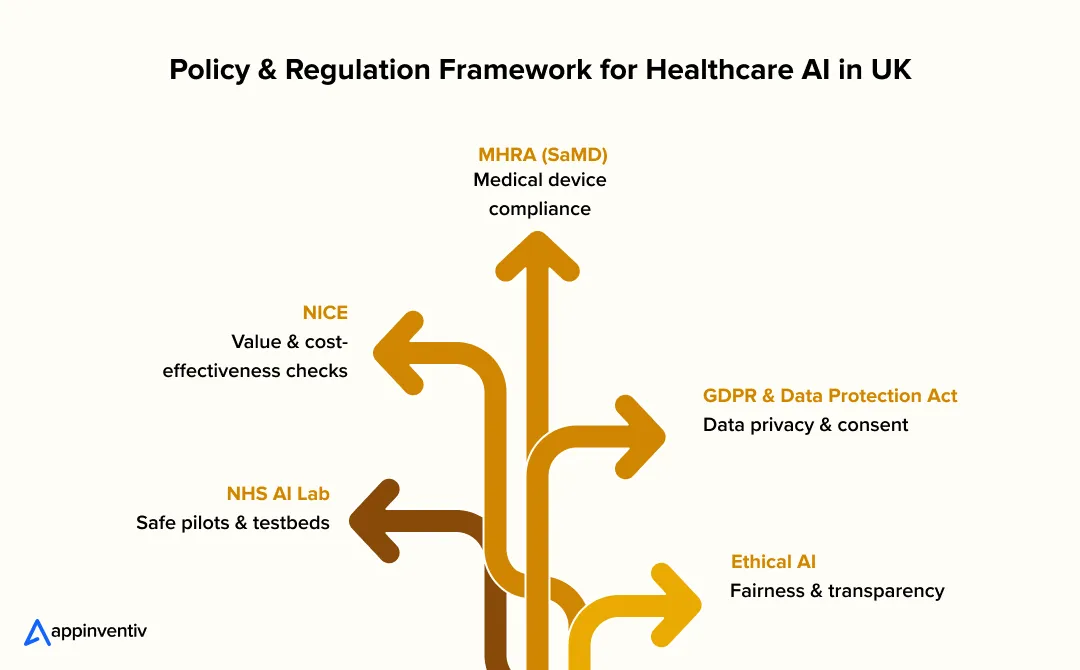
NHS AI Lab — Turning pilots into safe, usable tools
The NHS AI Lab works like a connector between technology companies and the health system. It gives hospitals clear, practical advice on how to test new tools, handle data safely, and manage risks, so they don’t have to start from scratch every time they try something new. Its library of resources and step-by-step guides also helps NHS trusts judge whether an AI product is strong and reliable enough to use in real care settings.
NICE — Proving value before widescale rollout
For an AI product to be taken seriously inside the NHS, it often goes through the National Institute for Health and Care Excellence (NICE). NICE checks if the tool is accurate, safe, and cost-effective. For instance, several AI imaging systems have already been put through early value assessments to show they can reduce missed diagnoses and help overworked radiology teams without adding new costs.
MHRA & SaMD — Regulating AI as a medical device
If AI is helping with diagnosis or guiding treatment, it counts as Software as a Medical Device (SaMD). That puts it under the Medicines and Healthcare products Regulatory Agency (MHRA), which asks for real clinical proof and safety checks that don’t stop once the tool is live. Developers have to show how the system was trained and tested and how they’ll keep an eye on updates after release. Since Brexit, the UK’s been reshaping its SaMD rules, so keeping up with MHRA changes is more important than ever.
GDPR & UK Data Protection Act — Protecting patient data
Health data is personal and needs careful handling. Any AI tool working with it has to follow GDPR and the UK’s Data Protection Act 2018. That means asking patients for permission in plain language, taking only the details that are truly needed, and giving them control over how their information is used. Companies that work with the NHS also have to clear the Data Security and Protection Toolkit — a check to make sure privacy and cyber safety are built in from the start.
Ethical AI Healthcare in UK — Fair and explainable by design
Beyond law, there is an ethical bar: AI must be understandable and fair. With a growing push for ethical AI healthcare in UK, hospitals and regulators expect that clinicians can see how a tool makes its recommendations and that the training data is not biased against certain patient groups. To make this easier, the UK has created “sandbox” programmes, safe test environments where AI products can be trialled under NHS supervision before they go live at scale. This move is shaping key healthcare technology trends in the UK for 2026, focusing on safety and fairness.
9 in 10 NHS leaders say data security and governance are top concerns when adopting AI.
Work with experts who design AI for UK healthcare safety from day one.
Challenges and Considerations for HealthTech Leaders
Building and deploying AI healthcare solutions in the UK is not just about writing good code. It also means adapting to fast-changing UK healthcare AI trends for 2026 while navigating the realities of the NHS, strict regulations, and clinical workflows. These are the most common roadblocks and how leading HealthTech teams are addressing them.
1. Integrating with complex NHS legacy IT systems and fragmented data
Many NHS trusts still run a patchwork of older EHR systems and locally managed data sets. Connecting a new AI product can require navigating inconsistent standards and siloed records, which is one of the hardest parts of digital transformation in healthcare UK and highlights the importance of modernizing legacy systems in healthcare..
Solution: Successful innovators focus on interoperability from day one. They build using open standards such as FHIR (Fast Healthcare Interoperability Resources) and partner with NHS Digital for access to integration guidelines. Some work directly with the NHS AI Lab’s testing frameworks, which provide safe test environments and reference architectures to reduce surprises when deploying at scale.
2. Overcoming clinician scepticism and training gaps
AI can feel like a black box, which creates natural pushback from doctors and nurses who rely on clinical reasoning and accountability.
Solution: Transparency and hands-on training are key. Developers increasingly use explainable AI techniques so clinicians can see why a tool gave its output. Early pilots include clinicians as co-designers and testers, turning them into advocates rather than critics. Hospitals such as Frimley Health, where the AI assistant Dora was introduced, pair rollout with tailored training so staff understand when to trust, question, or override the AI.
3. Ensuring data quality and avoiding harmful bias
AI is only as fair and accurate as the data it is trained on. UK patient data can be incomplete or uneven across demographics, risking bias that might harm under-represented groups.
Solution: Leading teams invest in robust data curation and validation before model training. Some combine NHS data with diverse open datasets to improve balance. Continuous model monitoring in production is now common; tools are checked for drift, and outputs are compared against real patient outcomes. The NHS AI Lab’s guidance on fairness helps developers assess risk before launch.
4. Navigating multiple layers of compliance while moving fast
For teams scaling AI in NHS, compliance can feel like a maze, with MHRA, NICE, GDPR, and local NHS governance often slowing down innovation.
Solution: Many HealthTech companies use a compliance-by-design approach. They plan regulatory pathways early, build technical documentation as they go, and work with notified bodies or regulatory consultants before scale-up. Using NHS “sandbox” programmes also helps. These controlled pilots allow real-world testing while satisfying regulators and speeding approval.
5. Proving return on investment in a cost-sensitive health system
Even if a tool works, NHS buyers need to know it is worth the cost. Budget holders face competing priorities and tight spending controls, especially when assessing artificial intelligence UK healthcare solutions and their long-term value.
Solution: Successful vendors link their impact directly to NHS priorities such as shorter waiting lists, reduced backlog, better staff utilisation, and improved patient outcomes. Some run joint pilot evaluations with trusts to capture metrics like hours saved, reduced readmissions, or cost per patient pathway. Having NICE or NHS England endorsements also helps justify long-term spending. It builds confidence in investing in AI-driven healthcare solutions UK across different care pathways.
Finally, adopting AI in hospitals isn’t just about new technology. It also means tackling data gaps, integration hurdles, and staff training. Learn practical strategies for overcoming AI challenges in healthcare to move from pilot projects to real impact.
Future of Healthcare in the UK: Beyond 2026
The UK’s health system is just at the start of what AI in UK Healthcare could achieve, with early pilots set to become everyday tools. Over the next few years, the tools being piloted now will move into routine use, and some entirely new capabilities will emerge. Here’s what’s coming — and what it could mean for patients, clinicians, and HealthTech builders.
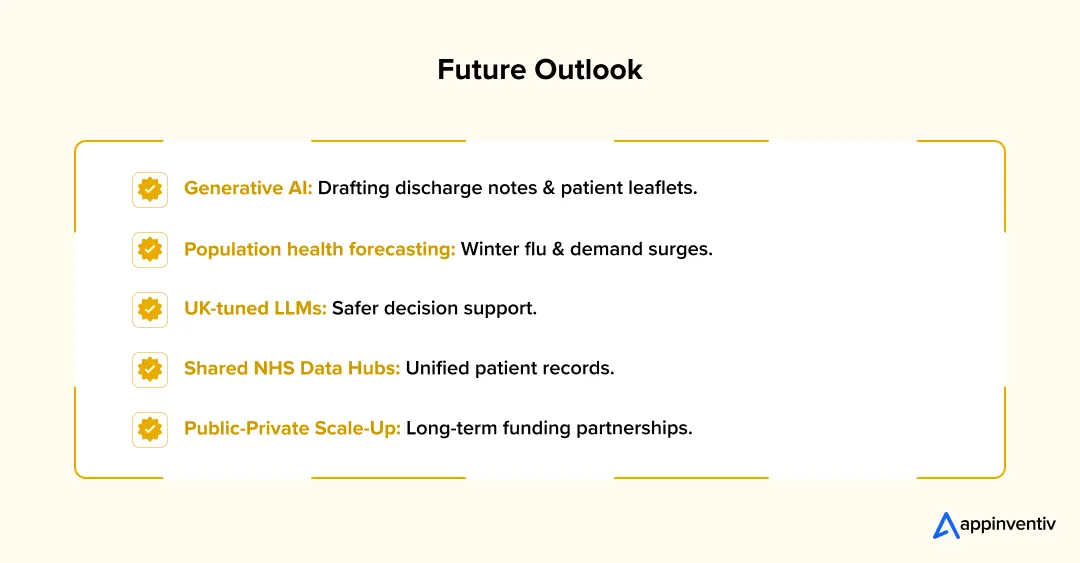
Generative AI for Clinical Documentation and Patient Support
Doctors spend a huge part of their day writing notes, discharge letters, and patient instructions. As part of shaping the future of healthcare in the UK, generative AI in NHS could take over the first draft of this work, pulling from patient records and test results to create clear, accurate documentation that clinicians simply review and sign off. For patients, the same technology could produce personalised after-care instructions or leaflets in plain English — or translated into their preferred language.
McKinsey’s recent research shows hospitals are already testing generative AI for summarising medical text and automating admin-heavy tasks, with the goal of returning more time to direct care.
The challenge will be accuracy and safety. HealthTech teams are expected to keep humans in the loop, add strict guardrails, and use trusted, verified data sources to avoid errors.
Predicting Health Trends at a Population Level
AI is also getting better at seeing the bigger picture. Instead of reacting when demand spikes, health systems could forecast it. Models trained on hospital admissions, local disease data, and social patterns could predict winter flu surges, mental health demand, or where heart failure risk is rising.
Deloitte notes that this kind of proactive planning can help hospital staff wards better, order supplies in time, and avoid the scramble when demand suddenly peaks.
It’s not foolproof, unexpected events can break forecasts. So planners will need to combine AI with scenario planning and maintain flexibility.
Safer Decision Support with UK-Specific Large Language Models
Large language models like ChatGPT have huge potential in medicine but need local tuning to be safe for UK use. Fine-tuning on NHS notes, UK guidelines, and population data could help these models support doctors with summarised research, second opinions, or patient communication.
The key will be transparency, AI models must show their reasoning and be continuously audited to ensure they are clinically sound. Developers are already exploring techniques like differential privacy and controlled access to keep patient data secure.
Better Data Sharing Across NHS Trusts
AI works best when it can learn from many different patient journeys, but UK healthcare data is still fragmented. Future progress depends on secure, shared data hubs where anonymised records from multiple trusts can be analysed safely.
These platforms would reduce duplication and speed up rollout of proven AI tools across the country, advancing the digital health UK network and helping unify patient data safely. The NHS AI Lab has started laying groundwork here, and AI healthcare startups UK are expected to play a key role in building privacy-safe, interoperable solutions.
More Public Funding and Support for Scale-Up
One-off pilot funding is not enough; NHS workforce AI automation will also require long-term investment to move from ‘promising idea’ to everyday practice. Government initiatives like the AI Diagnostic Fund will likely expand, and new incentive models may appear to help trusts adopt validated tools.
Deloitte’s healthcare outlook highlights that ongoing public-private funding partnerships will be essential to scaling AI while controlling costs, a priority reflected across key healthcare technology trends UK 2026.
For HealthTech founders, that means planning for staged adoption: pilot first, prove impact, and then expand. They also need to show measurable ROI along the way and keep an eye on emerging UK healthcare AI trends for 2026 to stay competitive.
From concept to pilot to full NHS deployment, we help HealthTech innovators build safe, scalable, and compliant solutions.
How Appinventiv Supports HealthTech Innovation
Building an AI healthcare product takes more than just great code. The momentum of AI transforming UK healthcare means new ideas must scale safely and meet NHS standards from day one. It means designing for patient trust, meeting strict privacy standards, and making sure the product fits into busy NHS environments. At Appinventiv, we help health innovators turn ambitious ideas into real solutions through our AI development solutions and deep experience in healthcare.
One example is Health-ePeople, an app that lets users gather data from hundreds of health devices in one secure place and decide what to share with doctors or researchers. Another is YouCOMM, a patient–nurse communication platform built to plug directly into hospital workflows, showing how thoughtful AI innovations in healthcare can support both patients and clinicians.
Beyond the build, we guide teams through the tough but critical parts: navigating NHS and MHRA requirements, planning safe pilot rollouts, and scaling without disruption. Our work in custom HealthTech software development services helps companies go from prototype to nationwide use while staying fully compliant with UK regulations.
If you’re ready to create or grow an AI-driven healthcare solution, and join the wave of HealthTech innovations UK, talk to us about how we can help you launch with confidence.
FAQ’s
Q. What are the key AI-powered Healthcare Trends for 2026 in UK?
A. By 2026, AI is moving out of small pilot programs and into day-to-day hospital and GP work. The biggest changes include faster disease detection through imaging tools, predictive analytics that help doctors step in before patients get worse, and simple automation that clears routine paperwork. These AI-powered Healthcare Trends for 2026 in UK are aimed at speeding up care and easing pressure on busy NHS teams.
Q. How is AI transforming healthcare in the UK?
A. AI is steadily reshaping the way care is delivered. Radiologists now get help sorting through scan backlogs, while GPs rely on risk-prediction tools to catch health issues earlier. Hospitals also use AI to create discharge notes so staff can spend less time on admin and more time with patients. These changes show how AI innovations in UK are turning into practical improvements on the ground.
Q. What are the top HealthTech innovations in the UK for 2026?
A. Some of the most exciting breakthroughs include Annalise.ai’s imaging for chest X-rays, Limbic’s mental health triage system, Doccla’s remote patient monitoring, and robotic surgery tools like Versius. Each one solves a real-world bottleneck — whether it’s cutting waiting lists, getting mental health support started sooner, or improving surgical precision. These examples reflect bigger healthcare technology trends UK 2026.
Q. How is AI used in the NHS?
A. The NHS is applying AI where it can make work faster and safer. Tools clear imaging queues, monitor patients with long-term illnesses at home, and screen mental health referrals before they hit long waiting lists. There’s also automation for discharge paperwork and admin. Together, these steps support the wider digital health UK push.
Q. What are the benefits of AI in UK healthcare?
A. AI means earlier answers, fewer delays, and better-matched treatment. It helps hospitals plan resources, cuts repetitive tasks, and lets staff focus on people instead of forms. Patients see shorter waits and more personalised care — much of it powered by emerging AI-driven healthcare solutions UK.
Q. What challenges does AI face in UK healthcare adoption?
A. Bringing AI into hospitals isn’t simple. Legacy IT systems, patchy data, and strict privacy rules can all slow things down. Some doctors also hesitate to trust “black box” tech. To overcome this, developers co-design tools with clinicians, follow NHS data standards, and pilot new systems in safe test environments before wide rollout — a practical way to support digital transformation in healthcare UK without risking patient trust.
Q. How will AI shape the future of healthcare in the UK?
A. AI will push care towards prevention and personalisation. Doctors will get tools that spot risks across whole communities, while new decision-support models will be trained on UK-specific health data. These shifts — part of the AI-powered Healthcare Trends for 2026 in UK — should mean faster, more accurate care and less strain on the NHS.
Q. Is AI making healthcare more efficient in the UK?
A. Yes. AI is already speeding up paperwork, helping plan staffing, and forecasting patient surges. Hospitals are saving hours on admin, freeing up beds faster, and keeping services moving despite workforce shortages.
Q. What role does AI play in patient diagnostics in the UK?
A. AI helps catch what the human eye might miss. For example, Annalise.ai’s chest X-ray tool checks scans for signs of lung cancer or pneumonia so radiologists can review urgent cases sooner. That means quicker treatment and better survival chances for patients.
Q. How does AI improve hospital management in the UK?
A. Hospitals use AI to organise bed space, schedule staff, and automate patient records. Predictive models also warn when demand is likely to spike, giving teams time to prepare and avoid bottlenecks.
Q. What is the future of digital health in the UK?
A. Digital health will keep growing. More people will use remote monitoring, connected apps, and telehealth backed by AI. Government support and private investment are helping proven tools scale across the country, adding to the momentum behind HealthTech innovations UK.
Q. How does AI improve patient care in the UK?
A. AI helps doctors tailor treatment by analysing scans, test results, and genetics. Patients get faster answers, clear instructions, and support at home through smart monitoring devices — making care feel more responsive and personal.
Q. How is the NHS future-proofing healthcare with AI?
A. The NHS is planning ahead with programs like the NHS AI Lab and the AI Diagnostic Fund. They test tools safely before broad rollout, set clear standards for data security and fairness, and provide funding for solutions that work. These efforts are helping build trust and scale AI-driven healthcare solutions UK across the system.


- In just 2 mins you will get a response
- Your idea is 100% protected by our Non Disclosure Agreement.
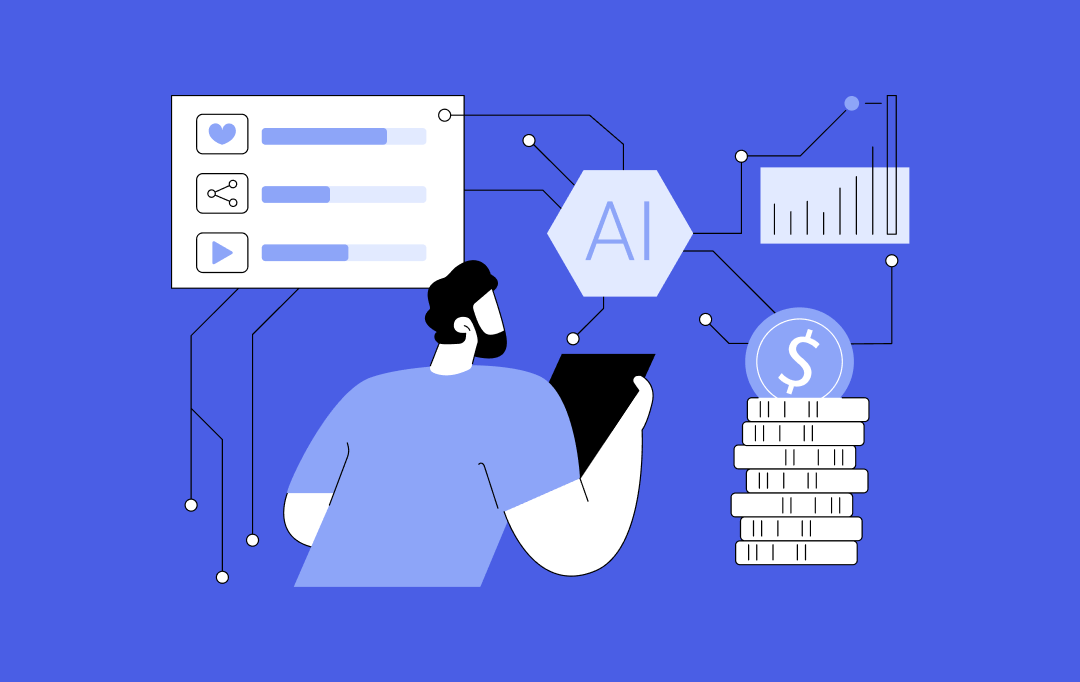
How AI Tokenization is Enabling Secure and Transparent Asset Ownership in 2026
By 2026, AI tokenization has moved beyond early-stage experiments and pilot projects. Tokenizing real-world assets has become a serious commercial strategy for financial institutions, supply chain operators and technology-driven enterprises. A 2025 report by the World Economic Forum in collaboration with Accenture highlights tokenization as a key mechanism for value exchange in modern financial markets.…

13 Ways Generative AI is Transforming the Hospitality Industry
Key takeaways: The most mature applications of Generative AI for hospitality are in guest service, revenue management, marketing, and operations automation. Real value comes from integrating generative AI into hospitality operations and existing PMS, CRS, CRM, and POS systems, rather than using stand-alone tools. Successful programs treat Generative AI in hospitality as a product, incorporating…
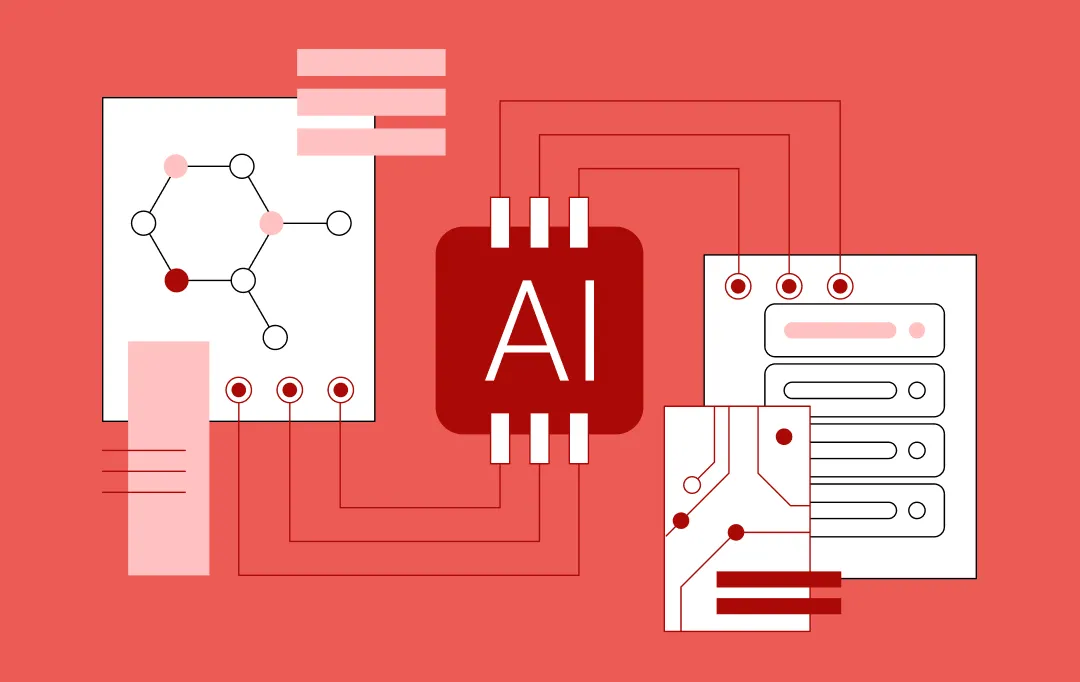
Scaling AI Initiatives: Why MLOps Matters More Than DevOps
Key takeaways: DevOps runs systems. MLOps keeps decisions accurate. MLOps vs DevOps is a leadership choice, not a technical one. Scaling AI without MLOps only scales risk. MLOps turns AI into infrastructure, not experiments. Operational maturity beats model sophistication. Real advantage comes from mastering DevOps and machine learning together. Most leadership teams don’t fail at…











